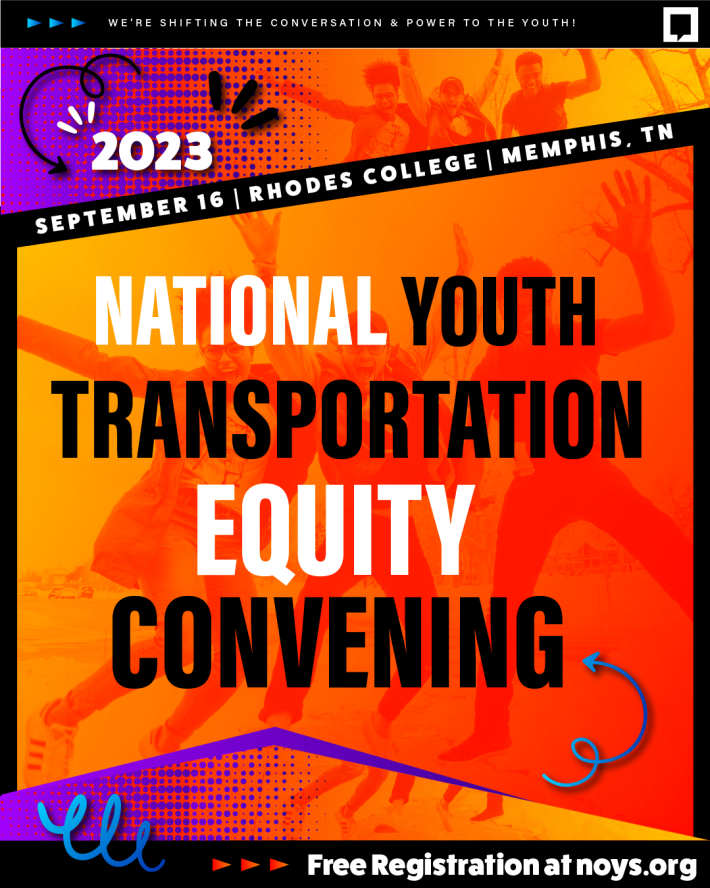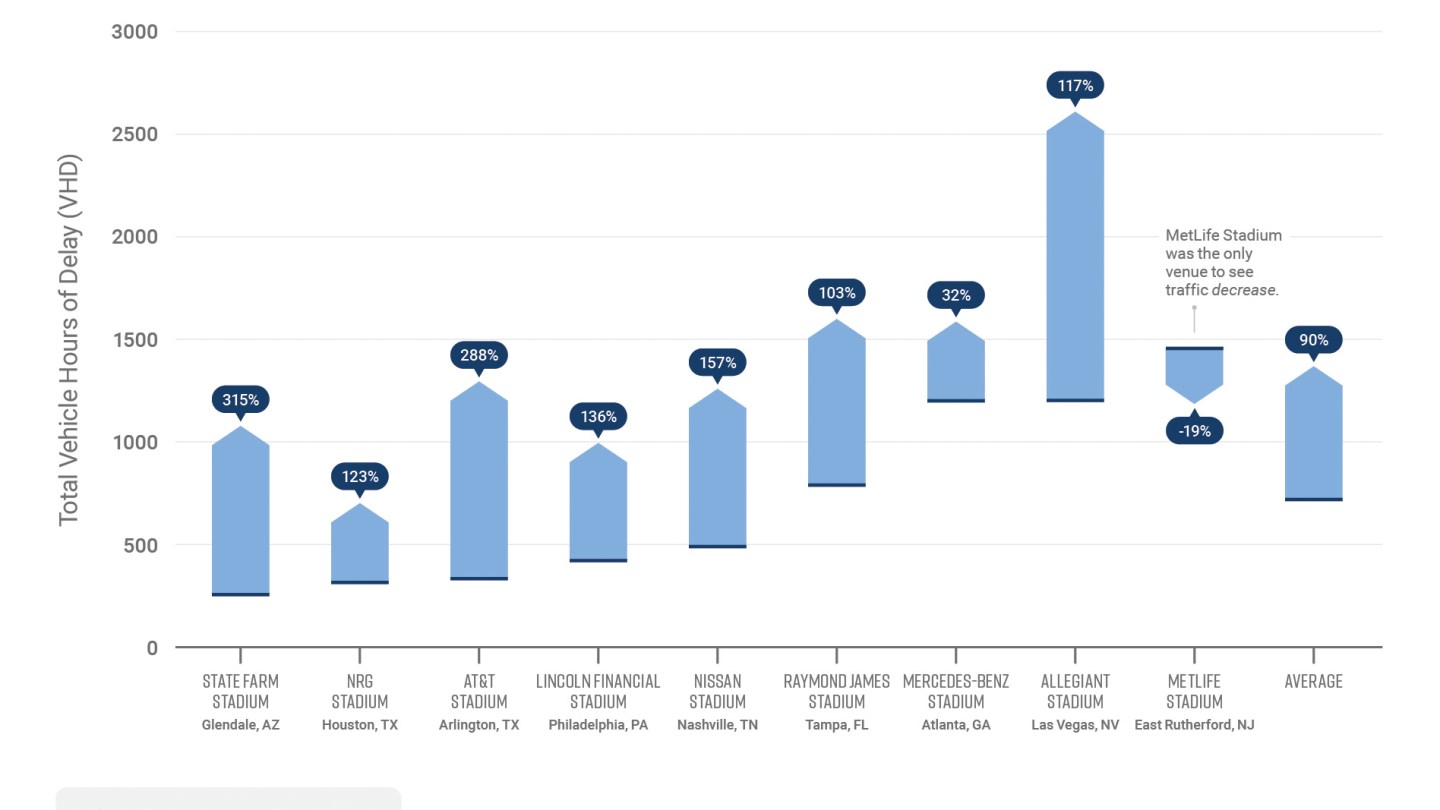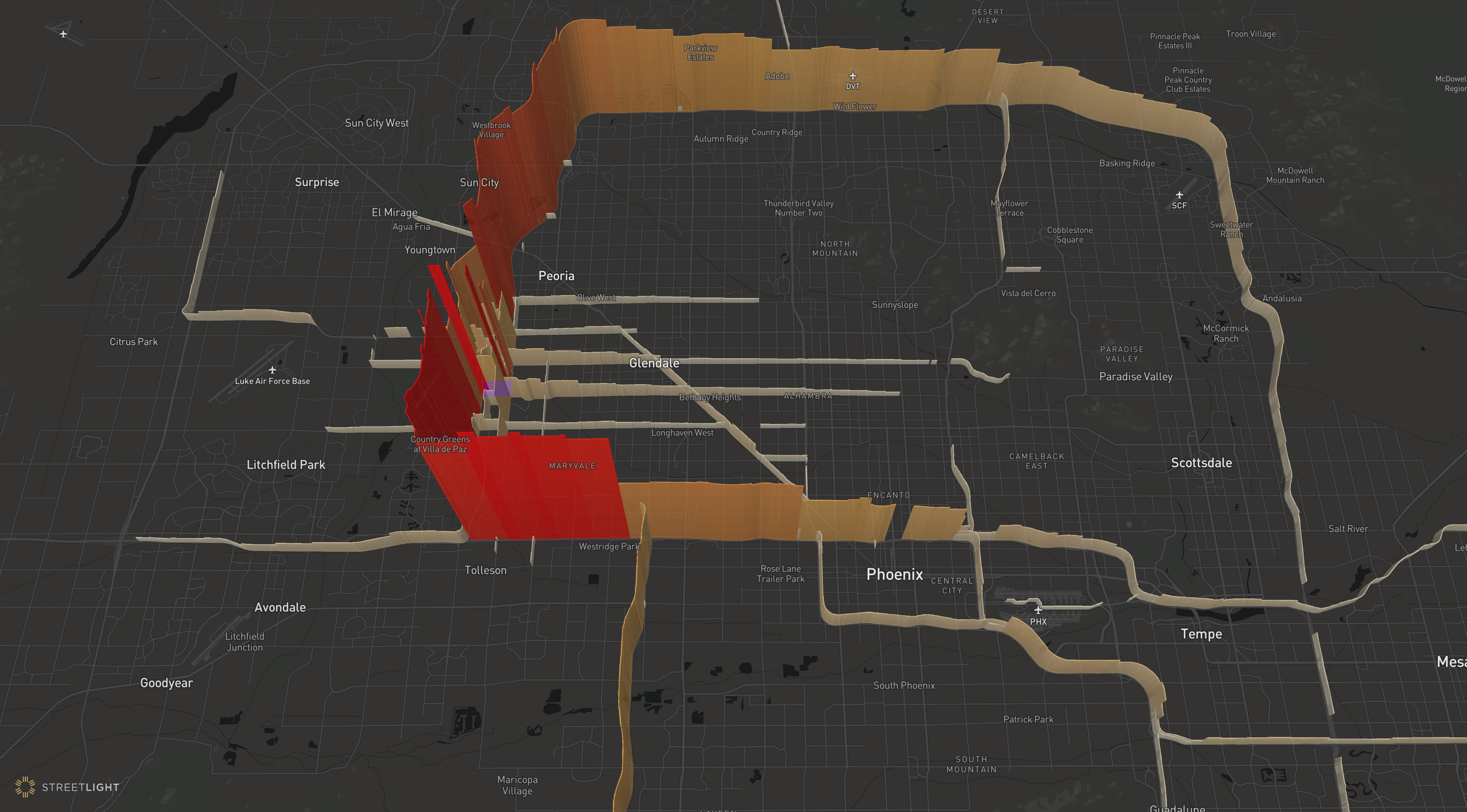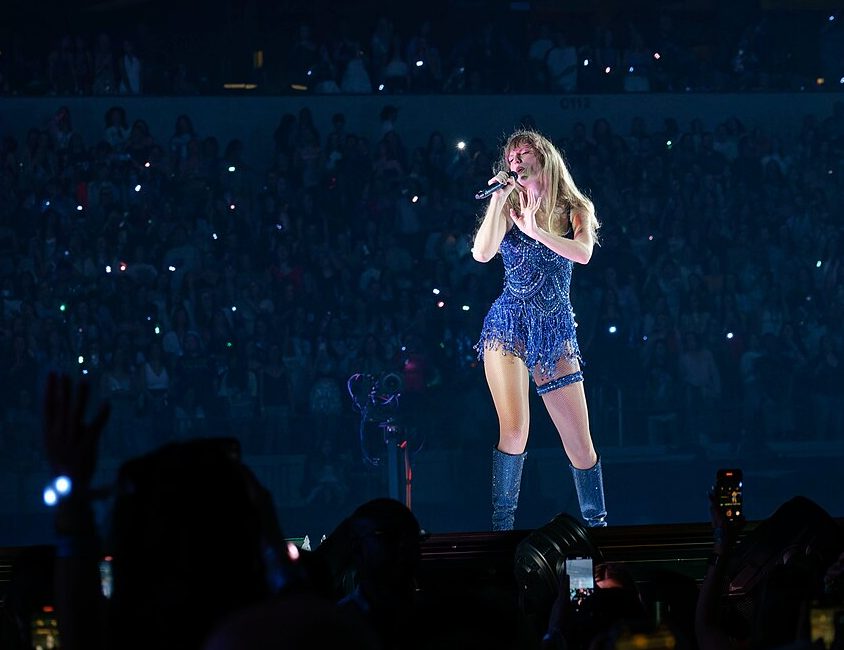
They knew she was trouble when she walked in.
U.S. cities that invested in transit when Taylor Swift’s tour came to town experienced surprisingly modest traffic impacts from the megastar’s visit — and in at least one of them, congestion actually went down.
With apologies in advance for the many bad Swiftie puns that will appear in this article, New Jerseyians probably never imagined in their wildest dreams that bringing the Eras tour to town would actually decrease the number of traffic jams on their roads. According to a new analysis from Streetlight Data, a major increase in transit service shifted many of the 80,000 concert-goers out of cars and onto buses and trains bound to and from the megastar's MetLife Stadium show in May.
Based on anonymized cell phone data from NJ roads immediately before Swift's three Memorial Day weekend shows, vehicle hours of delay on non-local roads near the venue dipped an average of 19 percent compared to typical traffic patterns on nights that month when one of the best-selling musicians of all time wasn't selling out arenas. That finding heavily suggests that Departments of Transportation need to calm down on all the useless highway expansion and invest in alternative modes instead.

When it comes to the fear of carmageddeon, the Garden State wasn't the only one to shake it off.
The Metropolitan Atlanta Rapid Transit Authority moved more than 140,000 people, tripled their typical weekend ridership and experienced highway traffic delay increases of only 32 percent during the concerts, despite the fact that the Big Peach had booked both Swift and legendary pop icon Janet Jackson on overlapping nights in two stadiums less than a mile apart.
Transit-poor cities, meanwhile, had a much tougher time managing traffic — and way fewer blank (parking) spaces. Swifties who saw their idol in the heavily car-dependent Phoenix suburb of Glendale experienced 315 percent more vehicle delay in the blocks surrounding the stadium — the worst traffic jams of any city on the tour — followed closely by Arlington, which offers only a minuscule rideshare service instead of fixed-route buses or trains, and also experienced roughly triple (288 percent) the time lost to congestion. (Scheduling the Rangers' opening day for the same weekend probably didn't help, which helps explain why traffic jumped a boggling 847 percent in the hours before Swift's Sunday show.)
The researchers behind the study called their findings a clear win for transit boosters, though they were careful to note that increased service alone can't explain why some cities tamed the T-Swift effect so much better than others. Communities like Philadelphia and Houston also promoted transit options prior to their shows — the latter even considered rebranding a key route as the "Red Line (Taylor's Version)" — but still reported a congestion crunch due to crashes and other factors.
"There are a lot of ways to do traffic management — though clearly, transit comes through as a big one," emphasized Emily Adler, content director for Streetlight. "But we also need to ask, where are people coming from? What routes do they take? Things as granular as where people are turning can have a really big impact."

Adler stresses that good data can help cities identify not just where they can direct drivers towards alternative routes on big concert days, but where to run extra buses to get them out of cars entirely, or improve safe bicycle and pedestrian connections to help revelers reach even the biggest stadiums on active modes. And if they can do it during the invasion of the Swifties, they can certain do it during other big events — or even just the daily rush hour.
"As transit agencies struggle financially in the midst of the work from home era, we have to remember that there is demand for shared transportation, but we have to find out where it is," she adds. "People are converging at different times and places now; we have to meet them where they are."






